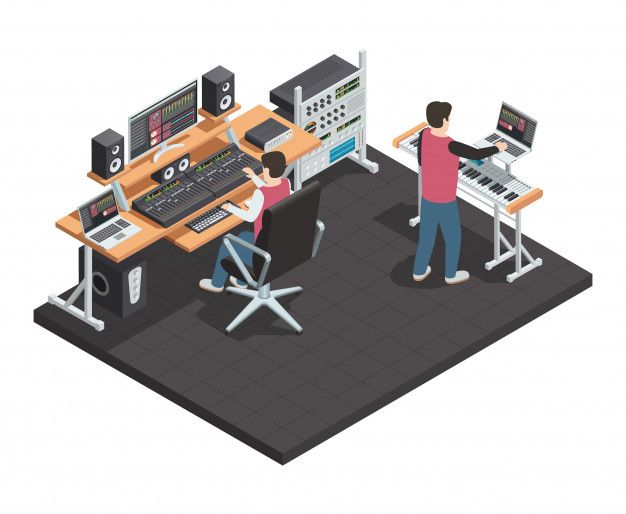How to Arrange Songs in the Studio?
A good rule of thumb is that when preparing for a recording session, the more time you spend on pre-production, the better your output will be. This is very critical as far as song arrangements are concerned.
The following tips are not an exhaustive list of organizing ideas, nor should you expect all the information to be new to you. Arrangement ideas are specific to each song – what can elevate one tune from mundane to unforgettable may not work at all on another. So even if a particular idea doesn’t work for a given song, remember it for later and it might just help you out with your next song.
1. Dynamics
One of the best ways to create natural movement in your songs is to utilize dynamic changes for separating verses and choruses. For example, choruses are often louder than verses. Drummers can play with a side stick on verses and a full snare on backing vocals, guitarists can hum backing vocals while arpeggiating verses, and keyboardists can clarify verses.
There are all kinds of ways to make dynamic changes, including adding or changing instrumentation when you want a section to get bigger.
2. Instruments
If the choruses are going to be larger than the verses, adding additional instruments to the choruses is a great way to achieve this. For example, if a verse has an electric guitar part, adding a more distorted second guitar in the backing vocals will definitely help the backing vocals be bigger. A piano in verse can be paired with an organ in a choir, or a tambourine (or other percussion instruments) can be used for the same effect. Any instrument that is added to a given section can be used: a sax, a mandolin, or an accordion.
3. Instrumental parts
The importance of the rhythm section can not be overstated, with the musicians creating and then playing parts. If you can create consistent parts for verses, choruses, and any other section within the song, not only will the arrangement make more sense, but it will likely become more musical.
4. Key Change
While it has been used, and possibly overused, for years when you need to pick up a song, a key change can work wonders. A half-step or full-step modulation after a solo, after a bridge, or in a repeating chorus can do wonders for the emotion of a song. However, you should use it in moderation and not overuse it. Otherwise, your song might start sounding a little weird and perhaps even amusical.
5. Arrangements
Background vocals are a great tool for creating song arrangements. As a song progresses, start with a harmony voice, add another later in the song, and work your way up to a full chorus (if the song supports that sort of thing).
It is more common to have one or two singers harmonizing some sections of the song along with the lead vocalist, while other parts of the song will have a small group of singers doing oohs and ahhs. This type of vocal pad can add richness and depth to even the quietest parts of the song.
From a lead vocalist’s perspective, changing the timbre of your voice from light and airy to a full-throated scream (or something in between) can define the parts of a song and make an arrangement more memorable.
These are just a few of the many things to think about when creating arrangements for studio recordings; there are hundreds more. While great songs and great performances are more important than any arrangement idea, great arrangements will help songs reach their full potential, so don’t sleep on it when you record a song.








